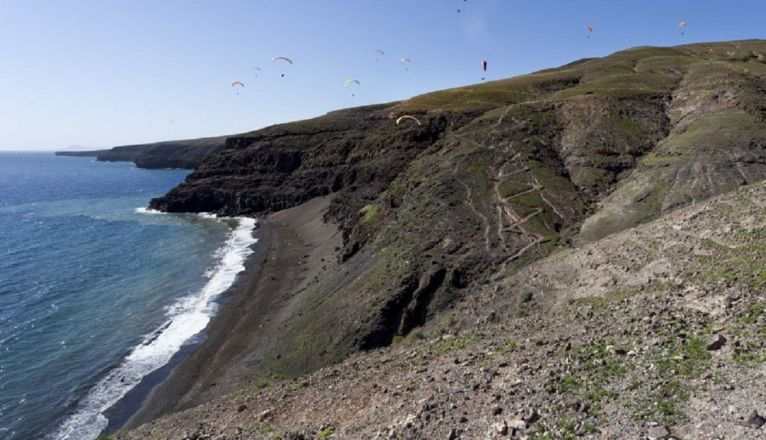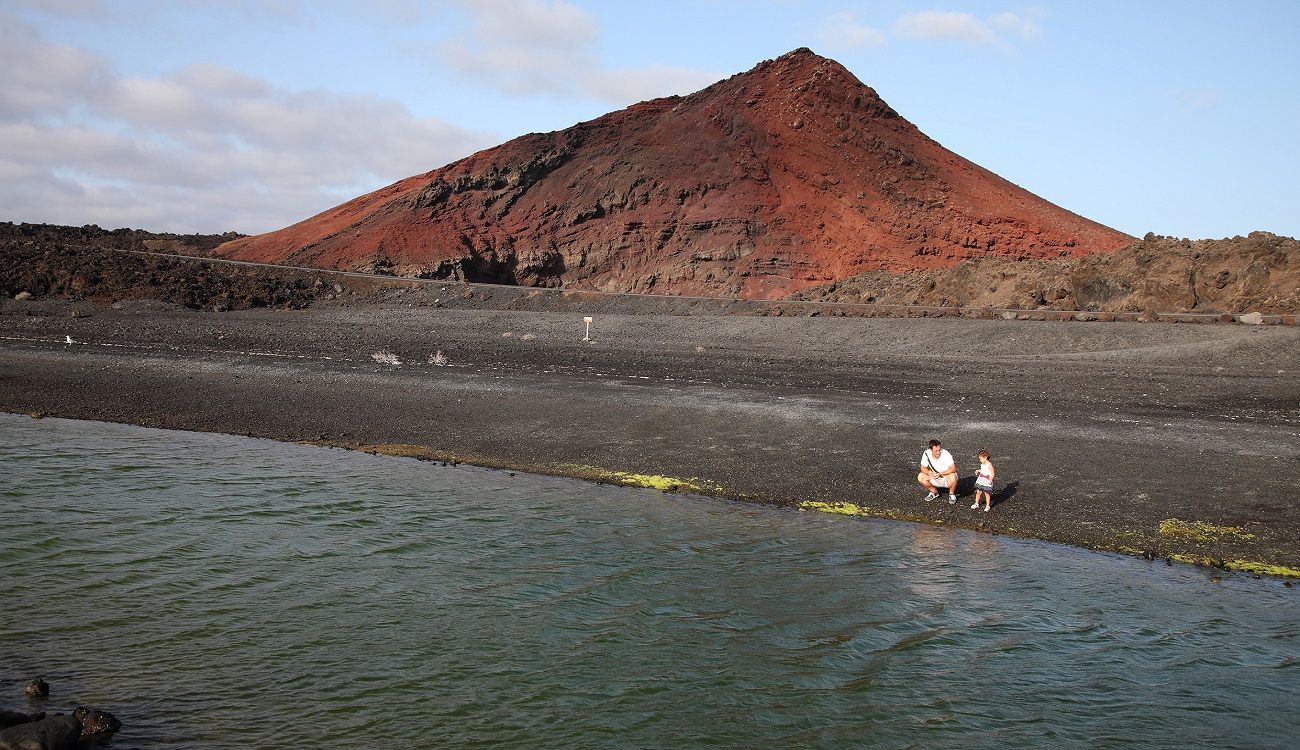Lanzarote is characterized by its volcanoes, but also by its countless beaches. However, many people are unaware that not all of them have golden sand. The island also has numerous black sand beaches.
In most of them, located in the south of the island, the waves hit the shore hardly, so jumping into the water is not recommended. The important thing is to follow the signs located on the beaches.
1. El Paso
El Paso beach is located on the coast of Timanfaya National Park, in the municipality of Yaiza, so it could be said that it is a beach literally between volcanoes.
About 180 meters long, this space is characterized by its coal-black sand, as well as its strong waves and sea currents, so swimming is totally unadvisable.
Besides, to access the beach, it is necessary to take a short walk along a dirt path that goes from the town of Golfo at the north.
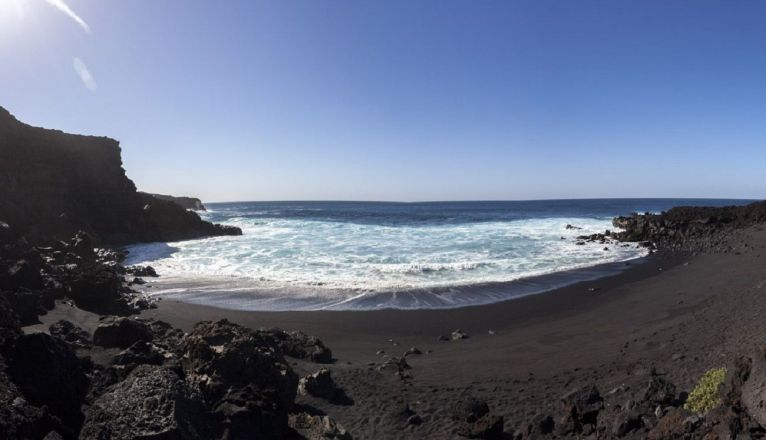
2. Los Clicos Beach
On the same coast, just 5 kilometers to the south, you can find one of the most touristic areas of Lanzarote, El Golfo.
It is a fishing village known by a huge seawater puddle, popularly known as "El Lago Verde", due to the color of its waters, a consequence of the abundance of sulfur.
In front of the lake and the surrounding reddish mountains, there is a black sand beach called Playa de los Clicos, where the waves hit the shore hard and swimming is not recommended either.
In any case, it is a good place for photography lovers, since the landscape transports you to Mars.
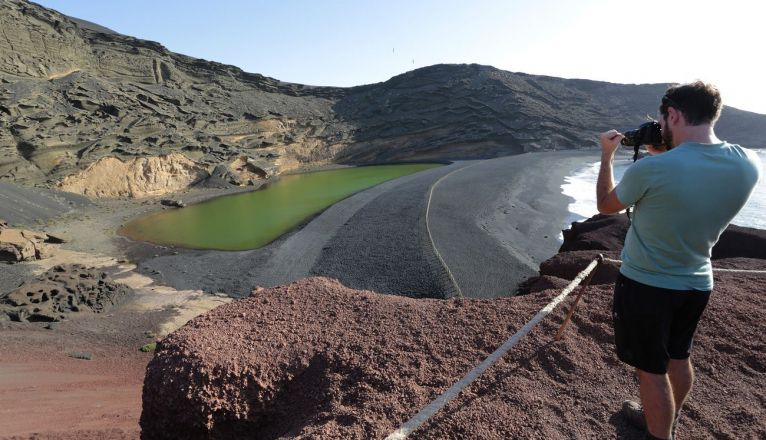
3. Montaña Bermeja Beach
If you continue the route to the south of the island, a few minutes by car, there is a beach very similar to Los Clicos, but much less frequented by tourists.
Located in front of the Montaña Bermeja’s volcano, from which it gets its name, and a small green pond, this black gravel beach manages to reflect a landscape that is very different from conventional beaches, with a contrast between the dark color of the sand, the blue of the sea and the red tones of the mountain.
To get to it, you have to follow a small path not far from the road and the parking, where you can leave your car. It is not usually crowded as it is rather a place of passage, since it is not suitable for swimming, due to the currents.
Many choose to go there to enjoy the sunset that dye the sky in orange and pink tones, under the sound of the waves, breaking strongly on the shore.
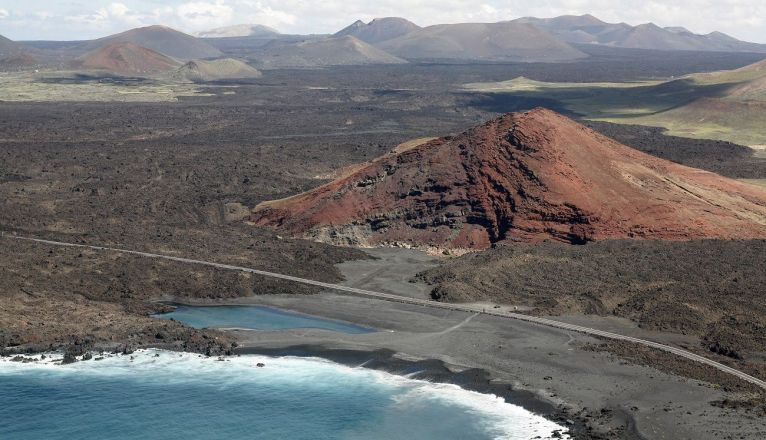
4. Janubio Beach
In the same strip of the coast and on the route to the popular area of Playa Blanca, there is another of the main attractions of Lanzarote, Salinas de Janubio. They are spaces where they used to craft the salt, a centuries-old activity, which also offers views full of colour.
In front of them you can fidn Janubio Beach, a virgin space with more than 800 meters of black sand full of signs that indicate the strength of the waves, so it tends to be a lonely spot.
Likewise, it is a space designated as a Special Protection Area for Birds (ZEPA), since the salt flats are home to birds such as the Road Pipit or the Trumpeter Finch.
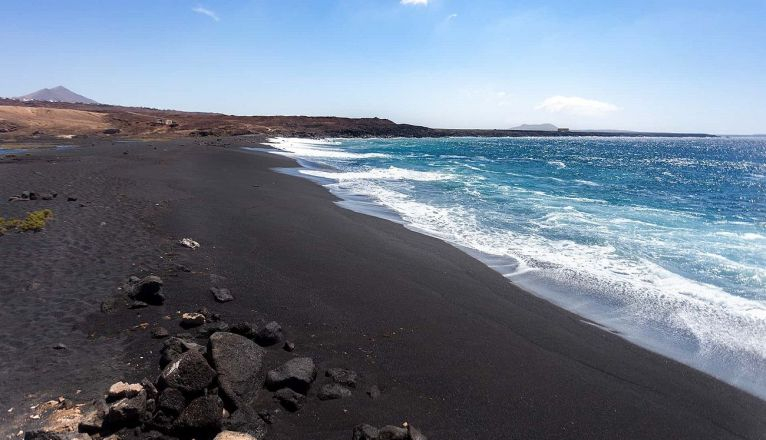
5. La Arena y El Pozo Beach
Finally, these two solitary beaches, located in Playa Quemada, in the south of the island, are known by their jable and dark-colored sand, like the others mentioned earlier, but they stand out for being the most suitable for swimming thanks to their calm waters.
Playa de la Arena is located a few meters from the area's fishing village, so it can be easily accessed by walking up a small hill, which belongs to the protected natural area of Los Ajaches. However, when the tide is completely low, you can also get there from the shore.
In addition, if you continue walking another half hour along the marked route, you will reach another beach, known as Playa del Pozo, a place that can also be accessed by a 4x4 vehicle. It is a spot rarely visited by tourists and even by locals, as it is further from the village.
